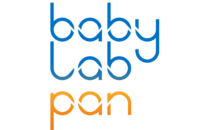Kierownik Pracowni Neurokognitywistyki Rozwojowej Babylab/Head of Neurocognitive Development Lab (Babylab PAN)
Bio (English): Przemysław (Przemek) Tomalski graduated in 2005 with a MA degree in Psychology from the University of Warsaw. For his PhD he investigated subcortical face processing under the supervision of Mark H. Johnson and Gergely Csibra at Birkbeck, University of London (UK). He then studied the effects of poverty on infant neurocognitive development in multi-ethnic and multi-lingual population of East London (UK), conducting the first resting EEG study of infants from families differing in socio-economic status. Later projects (funded by the Nuffield Foundation) involved predicting language development using mobile eye-tracking tasks and testing the effectiveness of early attention training in infants from low-SES families. Between 2012 and 2019 his Babylab at the University of Warsaw, Poland, investigated the effects of SES and household chaos on early attention and dyadic social interactions, as well as neural mechanisms of audiovisual speech processing in infancy (using EEG and fNIRS neuroimaging). He coordinated the Marie Skłodowska-Curie Innovative Training Network (SAPIENS, EU Horizon2020) for training young scientists in methods for studying social interactions and functional brain development.
His current research focuses on the mechanisms through which infant-parent interactions shape early attention and communicative development. This work is funded by the National Science Centre, the National Agency for Academic Exchange and the European Commission.
Bio (Polish): W 2005 r. ukończył studia w zakresie psychologii w Uniwersytecie Warszawskim w ramach Międzywydziałowych Indywidualnych Studiów Matematyczno-Przyrodniczych. W 2009 r. uzyskał stopień doktora Uniwersytetu Londyńskiego (Wielka Brytania) w zakresie neurokognitywistyki rozwojowej, a w kolejnych latach badał wczesny wpływ doświadczenia ubóstwa na rozwój neuropoznawczy niemowląt na Uniwersytecie Wschodniego Londynu (Wielka Brytania). W latach 2012-2022 pracował na Wydziale Psychologii Uniwersytetu Warszawskiego, gdzie w 2016 r. uzyskał stopień doktora habilitowanego.
Publikuje w obszarze badań czynników ryzyka rozwoju neuropoznawczego z wykorzystaniem nowoczesnych metod obrazowania mózgu (EEG, NIRS). W ramach europejskich konsorcjów Eurosibs/EU-AIMS poszukiwał wczesnych predyktorów autyzmu u niemowląt z rodzinnym ryzykiem tych zaburzeń. Koordynował europejską siecią szkoleniową MSCA ITN Sapiens.
Jest członkiem Rady Krajowego Funduszu na rzecz Dzieci, największej polskiej organizacji wspierającej uzdolnione dzieci i młodzież.
„Moje główne zainteresowania naukowe skupiają się wokół związków pomiędzy rozwojem psychicznym a rozwojem mózgu. Moje dotychczasowe badania sprawdzały, w jaki sposób wczesne doświadczenia i środowisko, w którym rozwijają się niemowlęta wpływają na ich sposób radzenia sobie z wyzwaniami, a także na uczenie się i organizowanie swoich działań. Aktualne projekty dotyczą tego, w jaki sposób codzienne interakcje rodzic-niemowlę kształtują funkcje mózgu dziecka, szczególnie w zakresie rozwoju mowy.”
Media społecznościowe/Social media:
E-mail: ptomalski@psych.pan.pl
Publikacje/Publications:
Laudańska, Z., Caunt, A., Cristia, A., Warlaumont, A., Patsis, K., Tomalski, P., Warreyn, P., Abney, D. H., Borjon, J. I., Airaksinen, M., Jones, E. J., Bölte, S., Dall, M., Holzinger, D., Poustka, L., Roeyers, H., Wass, S., Zhang, D., & Marschik, P. B. (2025). From data to discovery: Technology propels speech-language research and theory-building in developmental science. Neuroscience & Biobehavioral Reviews, 174, 106199. https://doi.org/10.1016/j.neubiorev.2025.106199
Laudańska, Z., Babis K., Kozioł, A., Szmytke, M., Marschik, P.B., Zhang, D., Malinowska-Korczak, A. López Pérez, D., Tomalski P. (2025). Context shapes (proto)conversations in the first year of life. Developmental Science, 28(3), e70018, https://doi.org/10.1111/desc.70018
Laudańska, Z., Malinowska-Korczak, A., Babis K., Mąka, S., Lozano, I., Marschik, P.B., Zhang, D., Patsis, K., Szmytke, M., Podstolak, M., Araszkiewicz, W. and Tomalski, P. et al. (2025). Sit and face the world: Ontogenetic adaptation in infant vocal production and visual attention during the transition to independent sitting. BMC Psychology, 13, 320, https://doi.org/10.1186/s40359-025-02645-9
Arellano-Véliz, N., Laudańska, Z., Duda-Goławska, J., Cox, R.F.A, and Tomalski, P. (2025). Relationship between temperamental dimensions and infant limb movement complexity and dynamic stability. Infant Behavior and Development, 79, 102050, https://doi.org/10.1016/j.infbeh.2025.102050
Lozano, I., Viktorsson, C., Capelli, E., Gliga, T., Riva, V., Tomalski, P. (2025). Early Selective Attention to the Articulating Mouth as a Potential Female-Specific Marker of Better Language Development in Autism: A Review. Frontiers in Psychology, 16, 1501688, https://doi.org/10.3389/fpsyg.2025.1501688
Belteki, Z., Ward, E. K., Begum-Ali, J., Van Den Boomen, C., Bölte, S., Buitelaar, J., Charman, T., Demurie, E., Falck-Ytter, T., Hunnius, S., Johnson, M. H., Jones, E. J. H., Oosterling, I., Pasco, G., Pijl, M. K. J., Radkowska, A., Rudling, M., Tomalski, P., Warreyn, P., … Haman, E. (2025). A Concurrent Validity Study of the Mullen Scales of Early Learning (MSEL) and the MacArthur-Bates Communicative Developmental Inventory (CDI) in Infants with an Elevated Likelihood or Diagnosis of Autism. Journal of Autism and Developmental Disorders, https://doi.org/10.1007/s10803-024-06652-4
Duda-Goławska, J., Rogowski, A., Laudańska, Z., Żygierewicz, J., & Tomalski, P. (2024). Identifying Infant Body Position from Inertial Sensors with Machine Learning: Which Parameters Matter? Sensors, 24(23), 7809. https://doi.org/10.3390/s24237809
Caruso A., Ribas Marzena Szkodo M.O., Micai M., Bernava G.M., Tartarisco G., Pérez Lopez D., Fazio M., Tomalski P., Scattoni M.L. (2024). Using DeepLabCut to Recognize Early Motor Development Patterns Associated with Neurodevelopmental Disorders. IEEE Access, 12, 116126-116134, https://doi.org/10.1109/ACCESS.2024.3441330
Pobierz PDF
Szmytke, M., Ilyka, D., Duda-Goławska, J., Laudańska, Z., Malinowska-Korczak, A., & Tomalski, P. (2023). The effect of face orientation on audiovisual speech integration in infancy: An electrophysiological study. Developmental Psychobiology, 65, e22431. https://doi.org/10.1002/dev.22431
Full text PDF
Dopierała, A. A. W., López Pérez, D., Mercure, E., Pluta, A., Malinowska-Korczak, A., Evans, S., Wolak, T., & Tomalski, P. (2023). Watching talking faces: The development of cortical representation of visual syllables in infancy. Brain and language, 244, 105304. https://doi.org/10.1016/j.bandl.2023.105304
Full text PDF
Dopierała, A.A.W., López Pérez, D., Mercure, E., Pluta, A., Malinowska-Korczak, A., Evans, S., Wolak, T.,& Tomalski, P. (2023). The Development of Cortical Responses to the Integration of Audiovisual Speech in Infancy, Brain Topography, doi: 10.1007/s10548-023-00959-8
Full text PDF
Laudańska, Z., Szmytke, M., Radkowska, A., Malinowska-Korczak, A., Babis, K., López Pérez, D., and Tomalski, P. (2023). Improving access to assessments of early motor development in local languages: Polish adaptation of the Early Motor Questionnaire, European Journal of Pediatrics, doi: 10.1007/s00431-023-04895-4
Full text PDF
Kozioł, A., López Pérez, D., Laudańska, Z., Malinowska-Korczak, A., Babis, K., Mykhailova, A., D’Souza, H., and Tomalski, P. (2023). Motor overflow during reaching in infancy: quantification of limb movement using motion sensors, Sensors, 23(5), 2653, doi: 10.3390/s23052653
Full text PDF
Laudańska, Z., López Pérez, D., Kozioł, A., Radkowska, A., Babis, K., Malinowska-Korczak, A., & Tomalski, P. (2022). Longitudinal changes in infants’ spontaneous rhythmic arm movements during rattle-shaking play with caregivers. Frontiers in Psychology, 13, 896319, doi: 10.3389/fpsyg.2022.896319
Full text PDF
Tomalski, P., López Pérez, D., Radkowska, A., Malinowska-Korczak, A. (2022). Dyadic interactions during infant learning: exploring infant-parent exchanges in experimental eye-tracking studies. Infant Behavior and Development, 69, 101780, doi: 10.1016/j.infbeh.2022.101780
Full text PDF
Lozano, I., López Pérez, D., Laudańska, Z., Malinowska-Korczak, A., Szmytke, M., Radkowska, A., & Tomalski, P. (2022). Changes in selective attention to articulating mouth across infancy: Sex differences and associations with language outcomes. Infancy, 27(6), 1132-1153, doi: 10.1111/infa.12496
Ful text PDF
Laudańska, Z., López Pérez, D., Radkowska, A., Babis, K., Malinowska-Korczak, A., Wallot, S. & Tomalski, P. (2022). Changes in the complexity of limbs movements during the first year of life across different tasks. Entropy, 24(4), 552. doi: 10.3390/e24040552
Full text PDF
Tomalski, P., López Pérez, D., Radkowska, A., and Malinowska-Korczak, A. (2021). Selective changes in complexity of visual scanning for social stimuli in infancy, Frontiers in Psychology, 12, 705600, doi: 10.3389/fpsyg.2021.705600
Full text PDF
López Pérez, D.*, Tomalski, P.*, Radkowska, A., Ballieux, H., Moore, D.G. and the TALBY Team (2021). Efficiency of scanning and attention to faces in infancy independently predict language development in a multi-ethnic and bilingual sample of 2-year-olds. First Language, 41(2), 218-239, doi: 10.1177/0142723720966815
Full text PDF
López Pérez D., Laudańska Z., Radkowska A., Babis K., Kozioł A., Tomalski P. (2021) Do we need expensive equipment to quantify infants’ movement? A cross-validation study between computer vision methods and sensor data. Proceedings of the IEEE International Conference on Development and Learning (ICDL) 2021 – 11th ICDL-EPIROB DOI: 10.1109/ICDL49984.2021.9515664
Full text PDF
Tomalski, P. & Malinowska-Korczak, A. (2020). What do young infants do during eye-tracking experiments? IP-BET – a coding scheme for quantifying spontaneous infant and parent behaviour. Frontiers in Psychology, 11: 764 . doi: 10.3389/fpsyg.2020.00764
Full text PDF
López Pérez, D., Ramotowska, S., Malinowska-Korczak, A., Haman, M. & Tomalski, P. (2020). Working together to orient faster: the combined effects of alerting and orienting networks on pupillary responses at 8 months of age. Developmental Cognitive Neuroscience, 42, 100763. doi: 10.1016/j.dcn.2020.100763
Full text PDF
Jones, E. J. H., Mason, L., Ali, J. B., Boomen, C. Van Den, Braukmann, R., Cauvet, E., Demurie, E., Hessels, R.S., Ward, E.K., Hunnius, S., Bolte, S., Tomalski, P., Kemner, C., Warreyn, P., Roeyers, H., Buitelaar, J., Falck-Ytter, T., Charman, T., Johnson, M.H., the Eurosibs Team (2019). Eurosibs : Towards robust measurement of infant neurocognitive predictors of autism across Europe. Infant Behavior and Development, 57(March), 101316. doi: 10.1016/j.infbeh.2019.03.007
Full text PDF
López Pérez, D., Kennedy, D.P., Tomalski, P., Bölte, S., D’Onofrio B.M., and Falck-Ytter T. (2019). Visual Search Performance is not Associated with Autistic Traits in the General Population. Journal Of Autism And Developmental Disorders, 49(6), 2624-2631. doi: 10.1007/s10803-019-03907-3
Full text PDF
López Pérez, D., Radkowska, A., Rączaszek-Leonardi, J. and Tomalski, P., The TALBY Study Team (2018). Beyond Fixation Durations: Recurrence Quantification Analysis Reveals Spatiotemporal Dynamics of Infant Visual Scanning. Journal of Vision, 18(5):5. doi: 10.1167/18.13.5.
Full text PDF
Niedźwiecka A., Ramotowska S. & Tomalski P. (2018). Mutual Gaze During Early Mother–Infant Interactions Promotes Attention Control Development. Child Development, 89, 2230-2244. doi: 10.1111/cdev.12830
Full text PDF
Tomalski, P., Marczuk, K., Pisula, E., Malinowska, A., Kawa, R., & Niedźwiecka, A. (2017). Chaotic home environment is associated with reduced infant processing speed under high task demands. Infant Behavior & Development, 48(Pt B), 124-133. doi: 10.1016/j.infbeh.2017.04.007
Full text PDF
Fletcher-Watson S, Apicella F, Auyeung B, Beranova S, Bonnet-Brilhault F, Canal-Bedia R, Charman T, Chericoni N, Conceição IC, Davies K, Farroni T, Gomot M, Jones E, Kaale A, Kapica K, Kawa R, Kylliäinen A, Larsen K, Lefort-Besnard J, Malvy J, Manso de Dios S, Markovska-Simoska S, Millo I, Miranda N, Pasco G, Pisula E, Raleva M, Rogé B, Salomone E, Schjolberg S, Tomalski P, Vicente AM, Yirmiya N. (2017). Attitudes of the autism community to early autism research. Autism, 21(1), 61-74. Doi: 10.1177/1362361315626577
Full text PDF
Tomalski, P. (2017). Cognitive neuroscience. In B. Hopkins, E. Geangu, & S. Linkenauger (Eds.), The Cambridge Encyclopedia of Child Development (pp. 576-581). Cambridge: Cambridge University Press. doi:10.1017/9781316216491.092
Full text PDF
Johnson M.H., & Moore D.G. (2016). Training attention control outside the lab: a contingent eye-tracking study of infants from diverse SES backgrounds. Journal of Applied Developmental Psychology, 43, 8-17,
doi:10.1016/j.appdev.2015.12.005
Full text PDF
Johnson M.H., Senju A. & Tomalski P. (2015). The two-process theory of face processing: Modifications based on two decades of data from infants and adults. Neuroscience and Biobehavioral Reviews, 50, 169-179. doi: 10.1016/j.neubiorev.2014.10.009
Full text PDF
Karmiloff-Smith A., Casey B.J., Massand E., Tomalski P., Thomas M.S.C. (2014). Environmental and genetic influences on neurocognitive development: the importance of multiple methodologies and time-dependent intervention. Clinical Psychological Science, 2(5),628-637. doi: 10.1177/2167702614521188
Full text PDF
Kushnerenko E*., Tomalski P*., Ballieux H., Ribeiro H., Potton A., Axelsson E.L., Murphy E. and Moore D.G. (2013). Brain responses to audiovisual speech mismatch in infants are associated with individual differences in looking behavior, European Journal of Neuroscience, 38(9), 3363-3369. (* equal contribution)
Tomalski P., Moore D.G., Ribeiro H., Axelsson E., Murphy E., Karmiloff-Smith A., Johnson M.H. and Kushnerenko E. (2013). Socio-economic status and functional brain development – associations in early infancy. Developmental Science, 16(5), 676-687, doi: 10.1111/desc.12079.
Guiraud J., Tomalski P., Kushnerenko E., Ribeiro H., Davies K., Charman T., Elsabbagh M., Johnson M.H. & the BASIS Team (2012). Atypical audiovisual speech integration in infant at risk for autism. PLOS One, doi:10.1371/journal.pone.0036428
Guiraud J., Kushnerenko E., Tomalski P., Davies K., Ribeiro H., Johnson M. H., and the BASIS Team (2011). Differential habituation to repeated sounds in infants at high risk for autism. Neuroreport, 22(16), 845-849.
Tomalski P. & Johnson M.H. (2010). The effects of early adversity on the adult and developing brain. Current Opinion in Psychiatry, 23(3), 233-238.

